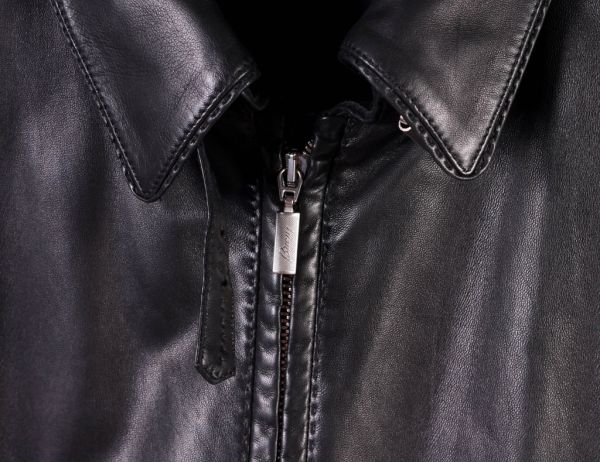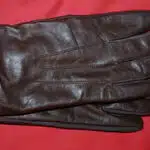As a leather care specialist, I have witnessed countless leather jackets succumb to the damaging effects of neglect and improper cleaning. Leather jackets are not only a stylish fashion statement but also an investment in your wardrobe that requires proper maintenance to prolong its lifespan. Cleaning a leather jacket may seem like a daunting task, but with the right tools and techniques, it can be done effectively.
Leather is a delicate material that requires special attention during cleaning to avoid damage. The wrong cleaning method or product can cause irreversible harm such as discoloration, cracking, and shrinkage. Therefore, it is crucial to understand the type of leather you are dealing with before attempting any cleaning procedure. In this article, I will share my expertise on how to clean a leather jacket effectively while avoiding common mistakes that can lead to damage. Whether you have an old vintage jacket or new designer piece, these tips will help you maintain its original beauty and durability for years to come.
Understanding The Type Of Leather
As a leather care specialist, I cannot stress enough the importance of understanding the type of leather your jacket is made of before attempting to clean it. Different types of leather require different care instructions, and using the wrong products or methods can cause permanent damage to your beloved jacket.
One type of leather commonly used for jackets is full-grain leather. This type of leather is made from the top layer of the hide and has not been sanded or buffed to remove imperfections. Full-grain leather is durable and develops a unique patina over time, but it requires special care to keep it looking its best.
Another common type of leather used for jackets is corrected-grain leather. This type of leather has been sanded or buffed to remove any imperfections and then embossed with a pattern to give it an even look. Corrected-grain leather is easier to maintain than full-grain leather, but it still requires proper cleaning techniques to avoid damage.
Before diving into cleaning your jacket, take some time to identify what type of leather it’s made from. Knowing this information will help you choose the right products and methods for cleaning without causing any harm to your cherished item. With that said, let’s move on to gathering the right tools and materials for effectively cleaning your jacket.
Gathering The Right Tools And Materials
Understanding the Type of Leather is crucial in determining how to clean a leather jacket. However, choosing the right cleaner is equally important. The wrong cleaner can cause damage to the leather or even discolor it. Therefore, it is essential to use a cleaner that is appropriate for the type of leather your jacket is made of.
When selecting a cleaner, it is best to choose one specifically designed for leather care. Avoid using household cleaners such as soap and water or vinegar as they can strip off natural oils from the leather, causing it to dry out and crack over time. It is also important to read and follow the instructions on the cleaner carefully.
Protecting the leather during cleaning is also crucial. Before applying any cleaner, test it on a small, inconspicuous area of your jacket first to ensure that it does not cause any discoloration or damage. Additionally, never use abrasive materials such as brushes or scrubbers when cleaning your jacket as they can scratch and damage the leather surface.
- Use a soft cloth or sponge for application
- Apply gently in circular motions
- Do not oversaturate with cleaner
- Allow sufficient drying time before conditioning
- Store in a cool, dry place away from sunlight
In summary, choosing the right cleaner and protecting the leather during cleaning are key factors in maintaining your leather jacket’s longevity and appearance. By following these guidelines along with understanding your specific type of leather, you can effectively clean your jacket without damaging it. In preparation for cleaning, there are additional steps you must take to ensure optimal results.
Preparing The Jacket For Cleaning
Stains should be identified and treated before attempting to clean the entire leather jacket. Damage should be assessed in order to determine the best cleaning method for the leather jacket. Mild soaps or leather cleaners may be used for removing stains, however harsher solvents should be avoided. It is important to test cleaning methods in an inconspicuous area prior to treating the entire leather jacket.
Removing Stains
Leather jackets are a popular fashion item, but they require proper care and maintenance to maintain their appearance and durability. Preparing the jacket for cleaning involves removing stains, which can be challenging depending on the type of stain and the leather’s finish. Fortunately, there are several options available for removing stains using household items or professional cleaning services.
Using household items such as vinegar, baking soda, or dish soap can effectively remove stains from leather jackets. For oil-based stains, applying cornstarch or talcum powder can absorb the oil before wiping it away with a clean cloth. For ink or dye stains, rubbing alcohol or nail polish remover on a cotton swab can help lift the stain without damaging the leather’s finish. However, it is essential to test any household cleaner on an inconspicuous area first to avoid any damage to the leather.
If household cleaners are not effective in removing stubborn stains or if you’re unsure about using them on your leather jacket, it may be best to seek professional cleaning services. Professional cleaners have specialized equipment and expertise in handling delicate materials like leather. They can identify the type of stain and use appropriate cleaning solutions that won’t damage your jacket’s finish. It is important to choose a reputable cleaner who specializes in leather care to ensure your jacket receives proper treatment.
In summary, preparing a leather jacket for cleaning involves removing stains using household items or professional cleaning services. While using household cleaners can be cost-effective and convenient, it is essential to test them first to avoid any damage to the leather. Seeking professional cleaning services may be necessary for stubborn stains or if you’re unsure about using household cleaners on your leather jacket. By following these steps, you can ensure your leather jacket looks great and lasts for many years to come!
Assessing Damage
Assessing leather jackets is an essential step in preparing them for cleaning. Before cleaning, it is crucial to identify any damage or wear and tear that may affect the jacket’s structural integrity. Assessing leather involves examining the surface for scratches, scuffs, cracks, or discoloration. These are signs of damage that require immediate attention to prevent further deterioration.
Identifying damage on a leather jacket requires a close inspection of the surface. Scratches and scuffs can be buffed out using a soft cloth or leather conditioner. However, if there are deep cuts or cracks on the surface, repairing them may require professional help. It is also important to check for any color fading or discoloration as this indicates exposure to sunlight or moisture. Leather jackets should be stored in a cool and dry place away from direct sunlight to prevent color fading.
In conclusion, assessing leather jackets before cleaning is a critical step in maintaining their appearance and durability. Identifying damage such as scratches, scuffs, cracks, and discoloration requires close inspection of the surface. While some damages can be repaired at home using simple tools like soft cloths and conditioners, others may require professional help. By following these steps, you can ensure your leather jacket looks great and lasts for many years to come!
Testing The Cleaning Solution
Testing the effectiveness of a cleaning solution is an essential step in maintaining the quality and condition of your leather jacket. Before applying any product, it is crucial to choose the right one that matches your jacket’s type and color. As a leather care specialist, I recommend selecting a product that is specifically designed for cleaning and conditioning leather materials. It is important to avoid using products containing harsh chemicals that may cause discoloration or damage to the material.
Once you have chosen a suitable cleaning solution, it’s time to test its effectiveness. Start by applying a small amount of the product on an inconspicuous area of the jacket such as the inner lining or collar. Gently rub the solution into the leather using a soft cloth and observe for any discoloration or adverse reactions. If there are no negative effects, proceed with cleaning the rest of the jacket using the same method.
It is worth noting that testing different products may be necessary before finding one that works best for your leather jacket. Different types of leather require specific care, so it’s essential to choose a product that meets those requirements. Additionally, if you notice any unusual effects after applying a particular product, stop using it immediately and seek professional assistance from a reputable leather care provider.
Moving forward, now that you have tested your cleaning solution’s effectiveness, it’s time to clean the exterior of your jacket thoroughly.
Cleaning The Exterior Of The Jacket
To clean the exterior of a leather jacket, it is essential to use natural cleaners that won’t harm the leather’s surface. Avoid using harsh chemicals, including bleach or ammonia, as they can damage your jacket’s color and texture. Instead, opt for mild soaps or detergents that are specifically designed for leather materials.
Before cleaning your leather jacket, ensure you inspect it thoroughly for any signs of damage. Look out for cracks, tears, or discoloration that may require professional attention. If you notice any issues, take your jacket to a reputable leather care specialist who can restore it to its original condition.
Preventing future damage is crucial when cleaning your leather jacket. After washing it with natural cleaners, allow it to air-dry in a cool and dry place away from direct sunlight or heat sources. Also, avoid exposing your jacket to extreme temperatures and moisture as they can cause significant damage to the material.
Transition: Now that you have learned how to clean the exterior of your leather jacket using natural cleaners and preventing future damage let’s move on to removing stains and spots without causing harm to the material.
Removing Stains And Spots
When it comes to cleaning your leather jacket, removing stains and spots can be a difficult task. It is important to approach each stain with care and attention to avoid damaging the leather. Two commonly encountered types of stains are oil and ink.
Removing oil stains from leather requires immediate action. Start by blotting the excess oil with a clean cloth or paper towel. Avoid rubbing the stain as this can cause it to spread further into the leather. Next, sprinkle some cornstarch or talcum powder onto the stain and leave it for several hours to absorb the remaining oil. Once the powder has had time to work, gently brush it off with a soft-bristled brush. Repeat this process until the stain has disappeared.
Tackling ink marks on leather requires a different approach. Begin by testing an inconspicuous area of your jacket with rubbing alcohol to ensure that it does not cause any discoloration or damage. If there are no issues, apply some rubbing alcohol onto a cotton ball and gently dab at the ink mark until it starts to fade away. Be careful not to over-saturate the area with alcohol as this can also cause damage to the leather surface.
- Use cornstarch or talcum powder on oil stains.
- Test rubbing alcohol on an inconspicuous area before using it on ink marks.
- Gently dab at ink marks using a cotton ball soaked in rubbing alcohol.
Next up, we will address how to deal with odors that may be lingering in your leather jacket without causing any harm.
Addressing Odors
A pungent smell emanating from your leather jacket can be bothersome and embarrassing, especially when you are in public. Not only is it unpleasant to wear, but it can also attract unwanted attention. Odors in leather jackets arise from various sources such as sweat, smoke, mildew, and spills. Luckily, there are ways to address them without damaging the material.
DIY odor removers are a popular option for those who prefer a cost-effective solution. A mixture of vinegar and water or baking soda and cornstarch can be applied to the interior of the jacket to absorb odors naturally. Ensure that the mixture is thoroughly spread over the affected area before leaving it to sit for a few hours. Use a clean cloth or vacuum cleaner to remove any residue once you are done.
Professional odor removal services are ideal for individuals with stubborn odors that DIY solutions cannot eliminate. Leather care specialists use specialized equipment and techniques that penetrate deep into the fibers of the jacket to remove even the most resistant smells. Moreover, they have access to commercial-grade products that effectively neutralize odors without causing damage to the material.
To maintain your leather jacket’s freshness, store it in a dry and well-ventilated area when not in use. Additionally, avoid exposing it to direct sunlight or high temperatures as this can cause discoloration and damage. The next section will address how to clean the interior of your jacket effectively while preserving its quality and appearance.
Cleaning The Interior Of The Jacket
- Removing stains from the interior of a leather jacket requires a gentle cleaner and a soft cloth.
- Vacuuming the interior of a leather jacket can help remove surface dirt and dust.
- Conditioning the interior of a leather jacket is necessary to help keep the leather soft and supple.
- Specialty leather cleaners can be applied to the interior of the leather jacket to help remove more stubborn stains.
- It is important to avoid using too much water when cleaning the interior of the leather jacket, as excess water can damage the leather.
- After cleaning, it is important to use a conditioner to help maintain the leather’s softness and suppleness.
Removing Stains
As a leather care specialist, it is common to encounter various types of stains on the interior of leather jackets. Stains can be caused by food, drinks, makeup or any other substances that come in contact with the jacket. These stains not only blemish the appearance of the jacket, but can also lead to unpleasant odors.
Effective stain removal techniques depend on the type of stain. Common stain types include oil-based stains, ink stains and protein-based stains such as blood or sweat. For oil-based stains, it is recommended to use a specialized leather cleaner and gently rub the affected area with a soft cloth until the stain disappears. Ink stains can be removed by dabbing rubbing alcohol on a cotton ball and gently rubbing the stained area. Protein-based stains require immediate attention and should be treated with a mixture of warm water and mild soap.
It is important to note that harsh chemicals should never be used when cleaning leather jackets as they can damage the material. In addition, it is recommended to test any cleaning solution on an inconspicuous area before applying it to the entire jacket. By using these effective stain removal techniques, you can ensure that your leather jacket remains in pristine condition for years to come.
Vacuuming
When it comes to cleaning the interior of a leather jacket, vacuuming is an important technique that every leather care specialist must know. Dust, dirt and other particles can accumulate in the crevices of the jacket over time, leading to unpleasant odors and potential damage to the material. Vacuuming is an effective way to remove these particles without causing any harm to the leather.
To begin vacuuming the interior of a leather jacket, it is recommended to use a soft-bristled brush attachment on the vacuum cleaner. This will ensure that the leather is not scratched or damaged during the process. Gently brush all areas of the interior, including pockets and seams, to dislodge any dirt or debris. Be sure to pay extra attention to areas where sweat may accumulate such as underarms and collar.
After vacuuming is completed, it is important to condition the leather to keep it supple and prevent cracking. Conditioning products should be applied sparingly with a soft cloth and allowed to absorb into the leather for at least 30 minutes before wiping off any excess. By incorporating regular vacuuming and conditioning into your overall leather care routine, you can help prolong the life of your leather jacket and maintain its pristine appearance for years to come.
Conditioning
After vacuuming the interior of a leather jacket, the next step in the cleaning process is to condition the leather. Applying conditioner to a leather jacket has numerous benefits, such as keeping the material supple and preventing it from cracking over time. Conditioning also restores natural oils that may have been lost due to exposure to heat or sunlight.
To apply conditioner to a leather jacket, it is recommended to use a high-quality product that is specifically designed for use on leather. The conditioner should be applied sparingly with a soft cloth and then allowed to absorb into the material for at least 30 minutes before wiping off any excess. It is important not to over-apply conditioner as this can leave a sticky residue on the surface of the leather.
By incorporating regular conditioning into your overall leather care routine, you can help prolong the life of your jacket and maintain its original appearance. Conditioning will keep the material soft and supple while also protecting it from damage caused by exposure to harsh weather conditions or everyday wear and tear. With proper care, your leather jacket will remain a timeless piece in your wardrobe for years to come.
Conditioning The Leather
Applying conditioner to your leather jacket is an essential step in maintaining its quality and longevity. A good conditioner helps to moisturize the leather, preventing it from drying out, cracking, or becoming brittle. Conditioning also helps to protect your jacket from harmful environmental factors like sunlight and humidity that can damage the leather over time.
When you are ready to apply conditioner to your leather jacket, you should first clean it thoroughly using a soft cloth or brush. This will remove any dirt or dust particles that may have accumulated on the surface of the jacket. Once you have cleaned the jacket, apply a small amount of conditioner onto a clean cloth and rub it gently onto the surface of the leather, making sure to cover all areas evenly.
To prevent cracking on your leather jacket, it is important to condition it regularly. Ideally, you should condition your jacket at least twice a year or more frequently if you live in an area with harsh weather conditions. Additionally, be sure to store your jacket in a cool and dry place when not in use as exposure to high temperatures and moisture can lead to cracking and other forms of damage.
- A well-conditioned leather jacket not only looks better but also feels softer and more comfortable.
- Neglecting to condition your leather jacket can cause it to become stiff and uncomfortable.
- By taking care of your leather jacket through regular conditioning, you are extending its lifespan while also protecting your investment.
Now that you have applied conditioner on your leather jacket, the next step is drying it off properly without damaging the material.
Drying The Jacket
Once you have finished cleaning your leather jacket, the next step is to dry it. The drying process is a crucial part of caring for your leather jacket, as any moisture left behind can lead to mold growth or damage to the material. Therefore, it is essential to ensure that your jacket dries completely before storing or wearing it.
The best way to dry a leather jacket is by air drying. You should avoid using any heat source such as a hairdryer or radiator. Heat sources can cause the leather to shrink and crack. Instead, hang your jacket on a hanger in a well-ventilated area away from direct sunlight. If possible, use a fan or open windows to increase air circulation around the jacket.
Before hanging your jacket to dry, make sure that you remove any excess water from it using towels. Gently press the towels against the surface of the leather to absorb as much moisture as possible. Do not rub or wring out the leather, as this can cause damage to its surface. Once you have removed all excess water, proceed with air drying following the steps outlined above.
| Leather Drying DO’s | Leather Drying DON’Ts |
|---|---|
| Do air dry in a well-ventilated area. | Don’t use heat sources such as hairdryers or radiators. |
| Do remove excess water using towels. | Don’t rub or wring out the leather. |
| Do use a fan to increase air circulation. | Don’t expose the leather directly to sunlight. |
| Do hang on a hanger. | Don’t store or wear when damp/moist. |
| Do allow ample time for complete drying. | Don’t rush through the drying process. |
In conclusion, drying your leather jacket after cleaning it is an important step in maintaining its quality and prolonging its lifespan. By air-drying it in a well-ventilated area and removing excess water using towels, you can prevent mold growth or damage to the leather. Remember to avoid using any heat sources and allow ample time for complete drying before storing or wearing your jacket. The next step in caring for your leather jacket is buffing and polishing it, which we will discuss in the subsequent section.
Buffing And Polishing
After the leather jacket has been dried, it’s time to buff and polish the surface. Buffing techniques vary depending on the type of leather and its condition. For example, a suede jacket will require a different buffing technique than a smooth leather jacket. It’s always best to consult with a leather care specialist or read the manufacturer’s instructions before attempting any buffing.
When it comes to polishing a leather jacket, there are many products available on the market. However, not all products are created equal. It’s important to choose a high-quality product that is specifically designed for leather care. Some of the best polishing products are those that contain natural ingredients such as beeswax or lanolin.
Properly buffing and polishing your leather jacket will help restore its shine and protect it from further damage. However, it’s important to remember that over-buffing or using too much polish can cause harm to the leather. Always use a gentle touch and follow instructions carefully to avoid causing any damage.
Transition: Now that you have successfully buffed and polished your leather jacket, it’s time to discuss how to properly store it to ensure its longevity.
Storing The Jacket Properly
As the saying goes, “a stitch in time saves nine.” Proper storage of your leather jacket can go a long way in preventing damage and extending its lifespan. Here’s what you need to do.
Firstly, find a cool and dry place to store your jacket. Humidity can cause leather to deteriorate quickly, so avoid storing it in damp areas such as basements or garages. Also, keep your jacket away from direct sunlight or any heat source as this can cause the leather to crack or fade.
Secondly, use a sturdy hanger that won’t stretch out the shoulders of your jacket. Avoid using wire hangers or ones with sharp edges that may damage the leather. It’s also essential to leave enough space between your jackets when hanging them up; overcrowding can lead to creases and wrinkles on the surface of the leather.
Lastly, cover your jacket with a breathable garment bag before storing it away. This will protect it from dust and moisture while allowing air circulation around the jacket. Remember never to wrap your leather jacket in plastic as this can trap moisture and promote mildew growth.
It’s essential to store your leather jacket properly if you want it to last for years to come. But even with proper storage techniques, common mistakes can still occur, leading to damage on your beloved piece of clothing. In the next section, we’ll explore some of these mistakes that you should avoid at all costs.
Avoiding Common Mistakes
Common mistakes can be made when attempting to clean a leather jacket, and these can often cause more harm than good. One of the most common errors is using too much water. Leather is a porous material, and if too much moisture is applied during cleaning, it can lead to discoloration and damage. Another mistake is using harsh chemicals or abrasives on the jacket. These can strip the natural oils from the leather and leave it dry and prone to cracking.
To avoid these mistakes, it is important to follow some basic tips for maintenance. Firstly, always use a damp cloth rather than soaking the leather in water. This will help to remove any dirt or stains without causing any damage. Secondly, choose a cleaning product that is specifically designed for use on leather jackets. These products are formulated to be gentle on the material while still being effective at removing dirt and grime. Finally, always test any new cleaning product on an inconspicuous area of the jacket before applying it more widely.
By following these simple tips for maintenance, you can keep your leather jacket looking its best for years to come. However, even with proper care, tough stains and damage may still occur. In the next section, we will discuss some steps you can take when dealing with these issues.
Dealing With Tough Stains And Damage
Preventing damage to your leather jacket is key to keeping it in good condition. It’s important to avoid exposing it to direct sunlight for extended periods of time, as this can cause fading and cracking. You should also avoid placing your jacket near a heat source, such as a radiator or heater, as this can dry out the leather and cause it to crack.
Choosing the right cleaning solution is also important when dealing with tough stains and damage on your leather jacket. Avoid using harsh chemicals or abrasive materials that can scratch or damage the surface of the leather. Instead, opt for a mild soap solution or specialized leather cleaner that is designed for your specific type of leather. Always test the solution on a small, inconspicuous area first before applying it to the entire surface of your jacket.
To remove tough stains, follow these steps:
- Blot any excess liquid or debris with a clean cloth.
- Apply a small amount of cleaning solution to a clean cloth.
- Gently rub the stained area in circular motions.
- Wipe away any excess cleaner with a damp cloth and allow to air dry.
By following these tips, you can effectively deal with tough stains and damage on your leather jacket at home. However, if you’re unsure about how to proceed or if you have serious damage that requires professional attention, don’t hesitate to seek help from a reputable leather care specialist.
Transition: While dealing with tough stains and damage might seem daunting at first, sometimes seeking professional help is necessary. In the next section, we’ll discuss when it’s appropriate to reach out for assistance from an expert in leather care.
Seeking Professional Help
Did you know that only 10% of leather owners seek professional help for cleaning and maintenance? While many people opt to clean their leather jackets themselves, sometimes it’s best to leave it to the experts. Finding a leather care specialist can be a daunting task, but with some research and weighing of costs, it can save you time and money in the long run.
When searching for a leather care specialist, it’s important to do your due diligence. Look for professionals who have experience working with leather and have positive reviews from previous customers. Ask friends or family members if they have any recommendations or check online forums for suggestions. Once you’ve narrowed down your options, consider the cost of their services. While professional help may seem expensive at first glance, it’s important to weigh that against the potential cost of damaging your jacket further by trying to clean it yourself.
If you decide that seeking professional help is the best option for your leather jacket, don’t hesitate to reach out to a specialist in your area. They will likely be able to provide you with a thorough cleaning and conditioning that will extend the life of your jacket. And remember, while the initial cost may seem steep, investing in proper care now can save you money in the long run by avoiding costly repairs or replacements down the line.
| Pros | Cons | Emotions Evoked |
|---|---|---|
| Professional cleaning ensures thorough removal of stains and dirt | Cost may be higher than DIY methods | Reassurance |
| Leather specialists have experience working with various types of leather | May need to wait longer for appointment availability | Confidence |
| Proper care can extend the life of your jacket | May require additional travel time to reach a specialist | Satisfaction |
| Can prevent costly repairs or replacements in the future | May not be necessary for all types of jackets or damage levels | Peace of mind |
In summary, while cleaning your own leather jacket may seem like a cost-effective option, sometimes seeking professional help is the best way to go. By finding experts with experience and positive reviews, you can ensure that your jacket receives the proper care it needs to last for years to come. While weighing the cost may seem daunting at first, investing in proper care now can save you both time and money in the long run.
Conclusion
Leather jackets are a timeless fashion statement, but they require proper care to maintain their quality and longevity. As a leather care specialist, I recommend first understanding the type of leather you are working with as different types have unique cleaning requirements. Gathering the right tools and materials is crucial to ensure a successful cleaning process.
Once you have prepared your jacket for cleaning, it is important to test your cleaning solution on an inconspicuous area of the jacket before diving into the exterior. Avoid common mistakes such as using harsh chemicals or excessive water that can damage your beloved jacket. In the case of tough stains and damage, seeking professional help may be necessary.
Your leather jacket is more than just clothing; it’s an investment that deserves proper care and attention. By following these steps, you can keep your jacket looking its best for years to come. Remember, always store your jacket properly in a cool and dry place away from direct sunlight or heat sources. Taking care of your leather jacket will not only prolong its life but also give you confidence knowing you look great in it every time you wear it.
Image Credits
- “Leather Jacket by Brioni” by Menswear Market (featured)





























